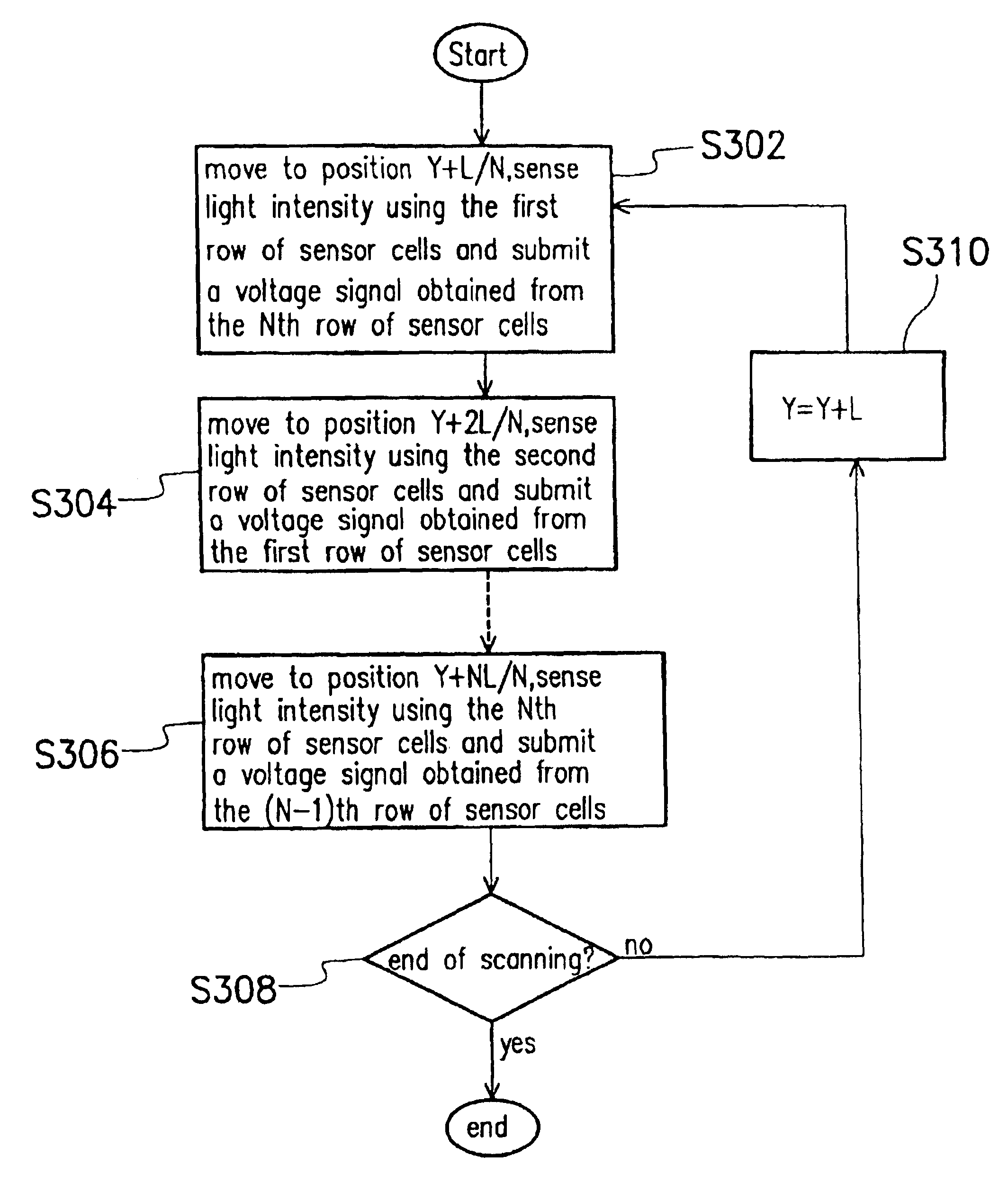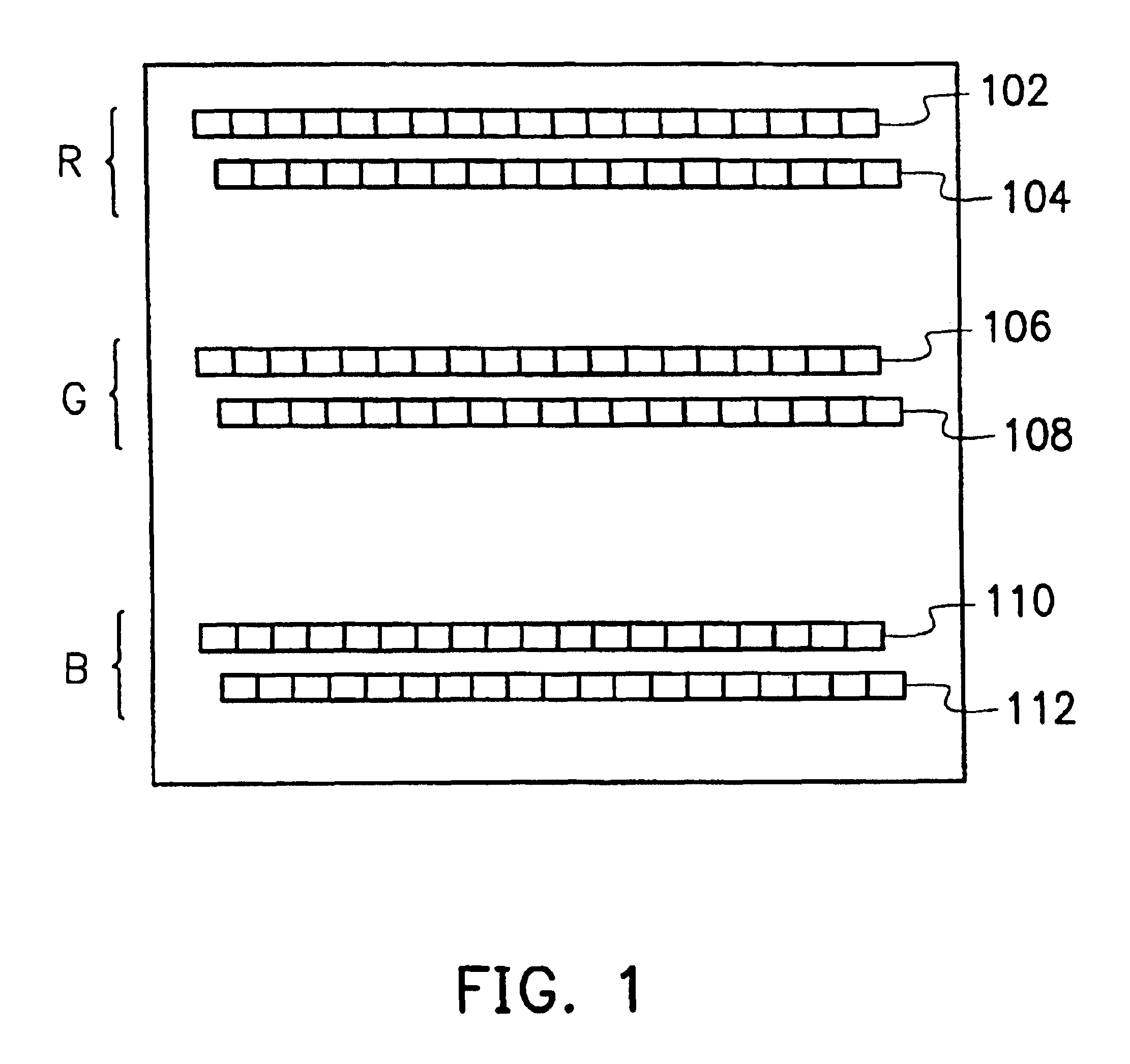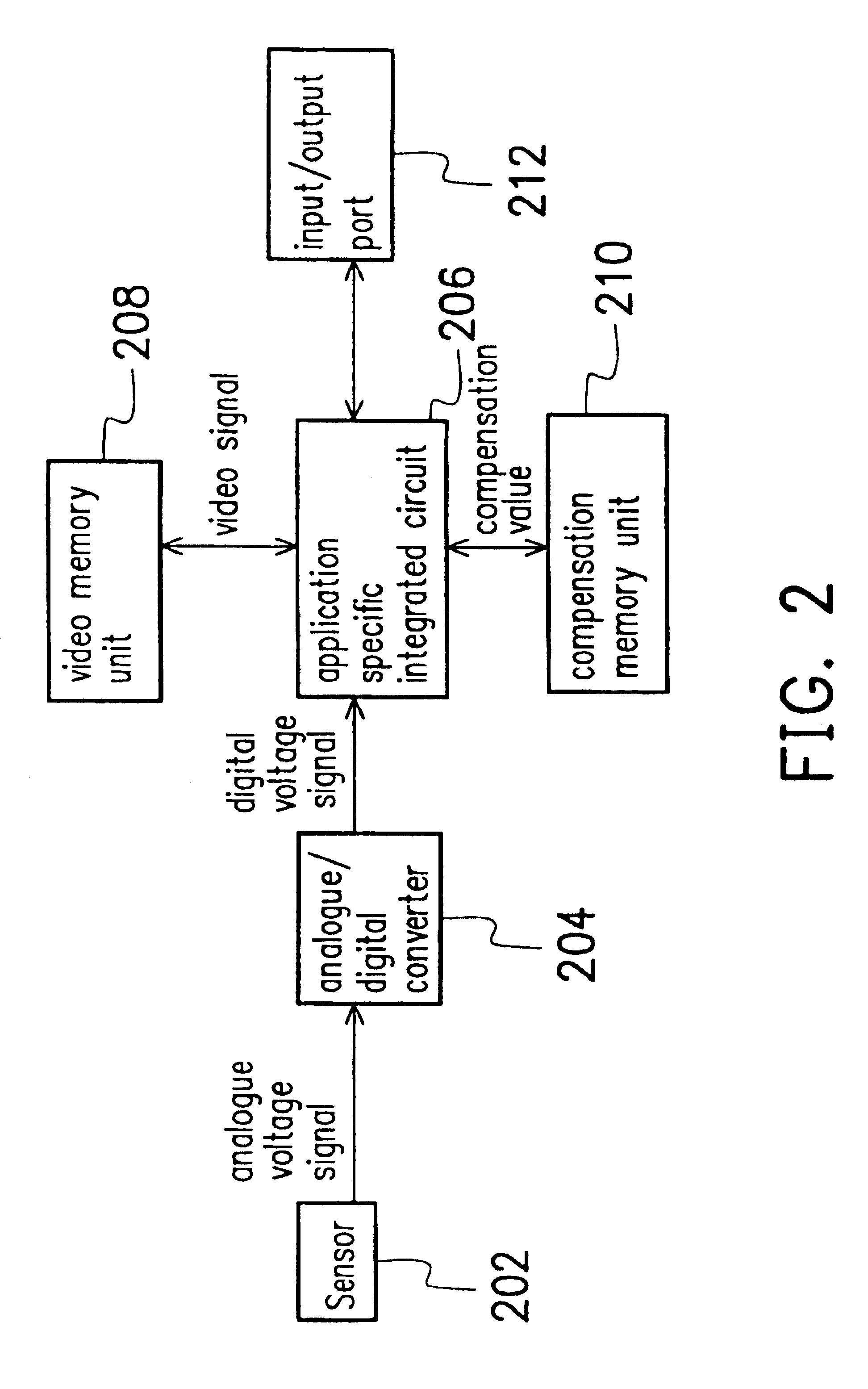Single step multi-section exposure scanning method
- Summary
- Abstract
- Description
- Claims
- Application Information
AI Technical Summary
Benefits of technology
Problems solved by technology
Method used
Image
Examples
Embodiment Construction
[0016]Reference will now be made in detail to the present preferred embodiments of the invention, examples of which are illustrated in the accompanying drawings. Wherever possible, the same reference numbers are used in the drawings and the description to refer to the same or like parts.
[0017]In one embodiment of this invention, the scanner has a photo-sensor and a stepper motor. The charge-coupled device (CCD) inside the photo-sensor is capable of sensing three primary colors red (R), green (G) and blue (B). Furthermore, each primary color is sensed by N rows sensor cells (refer to FIG. 1, N=2, 3, . . . ). In general, the photo-sensor moves forward a distance L (that is, the distance a scanning head moves over a scan document) when the stepper motor rotates once. During this interval, the N rows of sensor cells for each primary color must detect intensity of light reflected from a strip of scan document having a width.
[0018]FIG. 3 is a schematic diagram showing a single step multi-...
PUM
 Login to View More
Login to View More Abstract
Description
Claims
Application Information
 Login to View More
Login to View More - R&D
- Intellectual Property
- Life Sciences
- Materials
- Tech Scout
- Unparalleled Data Quality
- Higher Quality Content
- 60% Fewer Hallucinations
Browse by: Latest US Patents, China's latest patents, Technical Efficacy Thesaurus, Application Domain, Technology Topic, Popular Technical Reports.
© 2025 PatSnap. All rights reserved.Legal|Privacy policy|Modern Slavery Act Transparency Statement|Sitemap|About US| Contact US: help@patsnap.com



